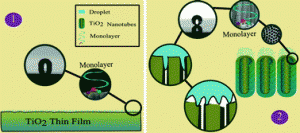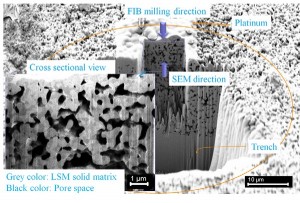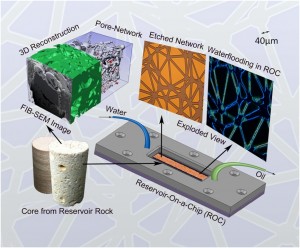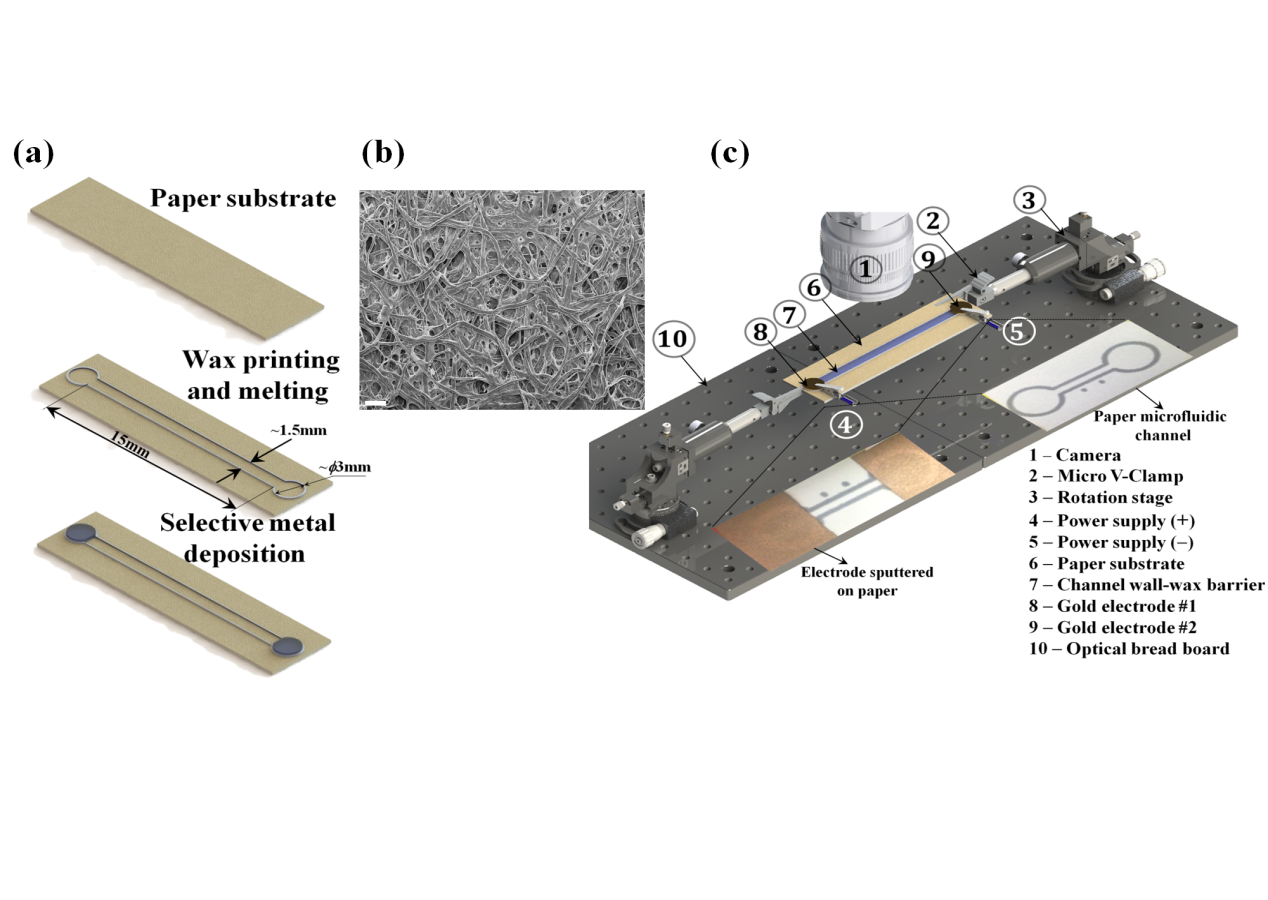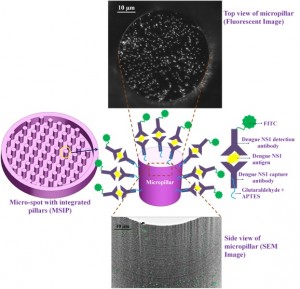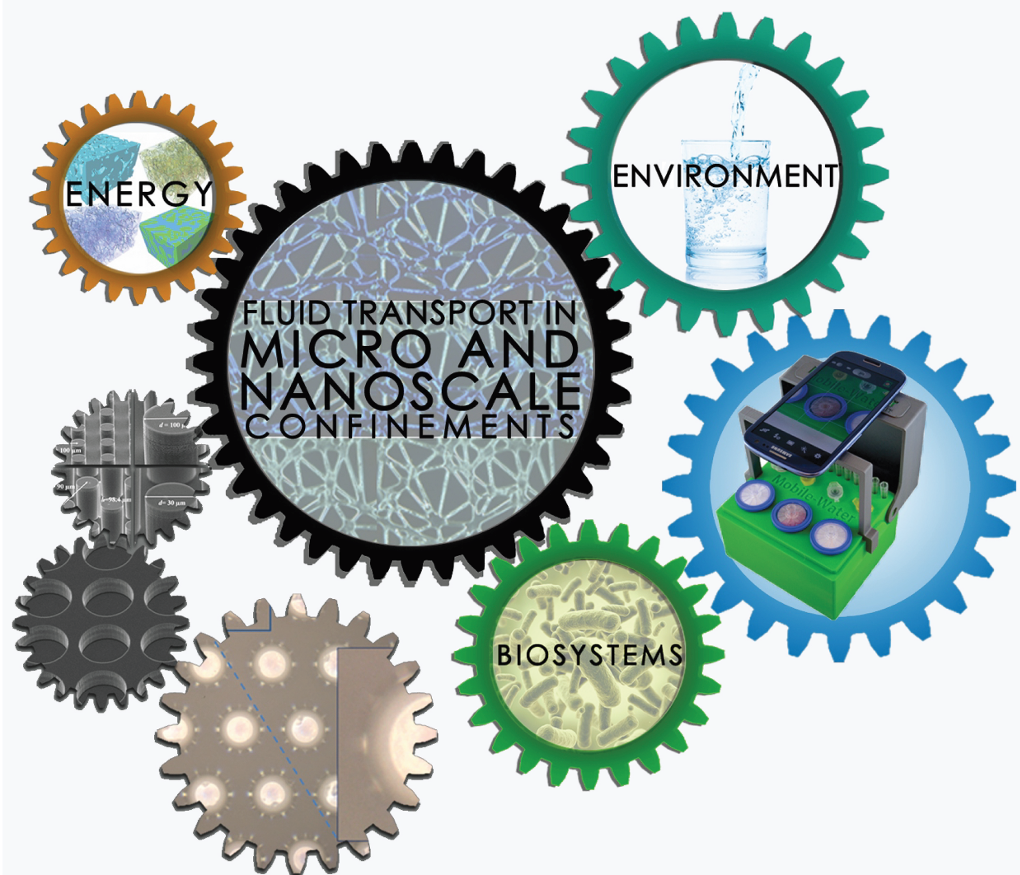
Fundamentals
MNT Lab research in the area deals closely with condensed matter physics. Some of the interesting problems tackled by the research group includes:
1. Under-water Drop Dynamics:
This innovation is a breakthrough in drop-deposition area particularly for under-liquid low energy surfaces. It is extremely difficult to place or deposit the liquid drop on liquid-repellent surfaces. The drop deposition is a requirement for identifying the extent of liquid repellency by the surface. We have developed non-intrusive technique that allows drop deposition for under-liquid low energy surfaces and measure the corresponding drop contact angle.
2. Superhydrophobic/Superoleophobic Surfaces:
Understanding how surfaces can repel broad spectrum of liquids by appropriate functionalizing of nanostructures is fundamental to the development of next generation of superhydrophobic/superoleophobic surfaces.
The liquid-repellent surfaces are obtained by an irreversible micro-nano fabrication processes. We have demonstrated that an under-water glass surface can repel oil (oil drops show unprecedented contact angle close to 180 degrees by merely changing the surfactant content in the water medium in which the glass is submerged.
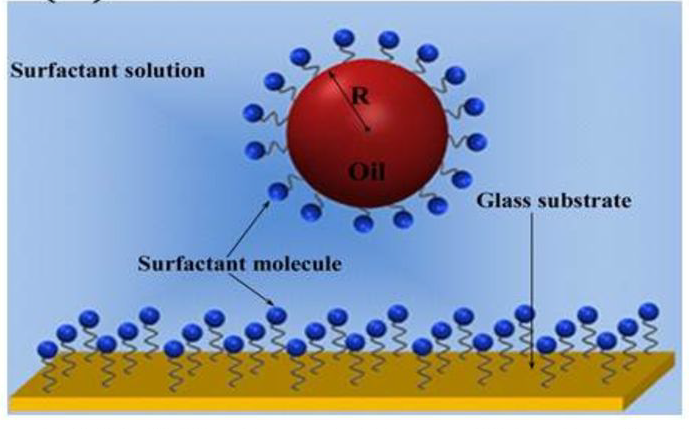
3. Capillarity and Surface tension
Capillarity plays a significant role in moving fluids in narrow confinements. Our research has developed new comprehensive mathematical models to decipher the capillary filling process in microfluidic channels, inclusive of models that illustrate the contribution of the inlet reservoir, charge build-up at the liquid-air interface, and entrance effects.
4. Study of Droplet Coalescence
The outcomes of droplet collisions depend on a wide range of length scales from nanometre-scale films to micron- or millimetre-size droplets. We use high-performance GPU computing on WestGrid to perform highly-resolved simulations that can be used to study the conditions for charged and uncharged drop coalescence. These results are useful for understanding and predicting the behaviour of large-scale emulsion flows and microfluidic devices that manipulate droplets.

5. Understanding ion transport in narrow confinements
When an electrolyte solution comes in contact with a charged or an ionizable solid, the charge developed at the solid-electrolyte interface gets balanced by a two-layer distribution of ions, popularly known as the Electric Double Layer (EDL).

The universally accepted approach has been to model the phenomena invoking classical Poisson Boltzmann (PB) approach. Off late, however, there have been substantial efforts to model the phenomena by relaxing the approximations of the PB approach, with the major motivation being the unfeasibility of the PB approach in several modern day applications involving nanoscale systems. In our endeavor, we have studied several interesting problems concerning the EDL modeling beyond the PB approach. For example, we have included effects such as the finite ion sizes and the EDL electric field driven solvent polarization in the EDL modeling. Such accounting has enabled us to correctly model the experimentally observed EDL-mediated electrostatic interactions (quantified by the corresponding osmotic pressure) whose interpretation has eluded scientists for several decades.
Energy
1. Fuel Cells
We have been involved in various aspects of research related to fuel cells. Some of the highlights include development of new mass transport model and experimental quantification of effective diffusivity and Knudsen diffusion in Polymer Electrolyte Membrane (PEM) Fuel cell, stochastic reconstruction of Gas Diffusion Layer and catalyst layer of PEM fuel cell, and also understanding the pore structure of Solid Oxide Fuel Cell electrode by performing Focused Ion Beam – Scanning Electron Microscopy (FIB-SEM).
2. Reservoir-on-a-Chip (ROC)
ROC is a novel miniaturization approach to study oil recovery in a microfluidic device, mimicking the pore structure of a naturally occurring oil-bearing reservoir rock in an etched silicon/Quartz substrate. The device will enable researchers to better understand pore-scale transport relevant to reservoir engineering.
3. Emulsion & Water Flooding:
We have proposed a new method, Water-Alternate-Emulsion (WAE), which allows additional oil recovery from reservoirs using emulsion. Also, we have performed significant studies related to the comprehensive understanding of water flooding for oil recovery.

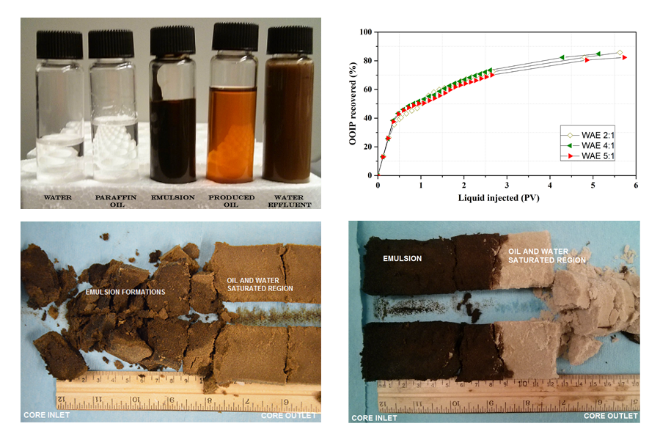
4. Bioconversion of Coal
A pressurized core flooding experimental system was developed to better understand in situ coal bioconversion processes. With energy demands rising and the increasing importance of low-carbon technologies, the microbial conversion of coal into methane and other value added products was found to be potential technology towards minimizing environmental impact.
Environment
1. Water Quality Monitoring and Treatment
We have developed Mobile Water Kit (MWK) which allows detection of E. coli and total coliform within 2- 3 mins as oppose to conventional technique of 24 – 48 hours. Also, we have developed rapid Fluoride detection sensor for potable water. We plan to detect other heavy metals in water. Also, work is underway to provide nature inspired solution for water treatment to remove both bacterial and metal contaminants. We were able to successfully deploy MWK in number of communities in India and also in US county through partnerships with local government and non-government organizations, which is a great example of translational research from MNT Lab.

2. Paper-based microfluidics systems
Low-cost paper-based microfluidics sensors are under development to provide instant reading of water quality parameters. They are intended to be mass deployed in limited resource communities.
Biosystems
1. Detection of food borne pathogens
We have designed, fabricated and tested Mach-Zehnder Interferometer (MZI) biosensor based on total internal reflection (TIR) for the detection of a food borne pathogen, Listeria Monocytogenes. This device will allow rapid real-time detection of the bacteria reducing the likelihood of contamination of ready-to-eat (RTE) products.

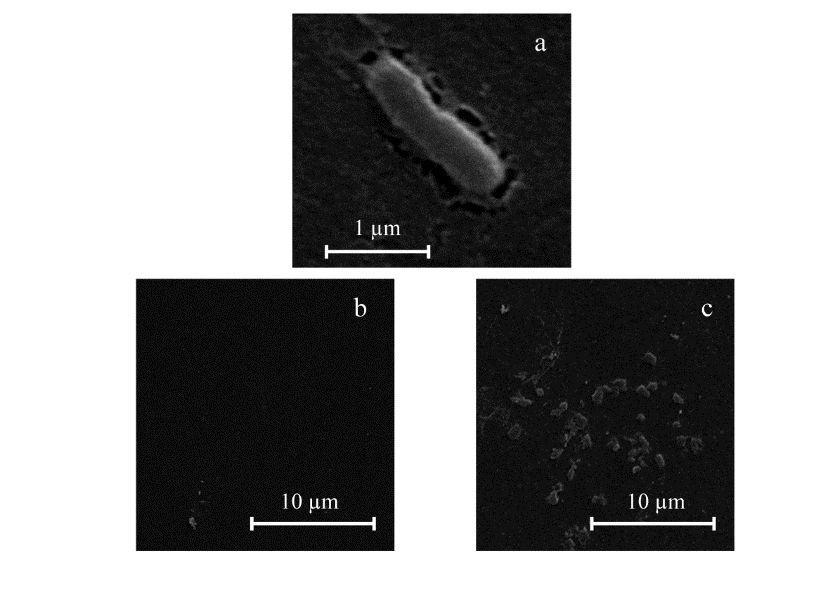
2. Detection of cardiac markers
We have develop a rapid, accurate, highly sensitive detection system for monitoring the levels of different cardiac markers from a small amount of blood serum. We investigated and developed different microfluidic based sensors (colorimetric, fluorescence, dielectrophoresis, impedance and/or microcantilever) for simultaneous detection of different cardiac markers such as Myoglobin, Troponin I, Troponin T and CK-MB in the blood samples. This approach of simultaneous detection of different cardiac markers will facilitate the rapid and early diagnosis of heart attacks.

3. Bio-functionalization for sensor development
Strong and robust attachment of the biomolecules to the surface is very important for the proper and effective functioning of biosensors. The sensitivity of any biosensor depends on how efficiently and effectively the biomolecule is immobilized on to the surface. Bio-immobilization is a key step in the development of any biosensors. Events like denaturation cross binding, non-specific adsorption and non- uniform distribution of the biomolecules should be minimized to reduce the false positive and negative results. High density and oriented immobilization onto the surface can help in reducing these undesirable events. The scope of our research is to study the chemical and biochemical features associated with the attachment of the biomolecules to the surface and to estimate the immobilization efficiency of the biomolecules on the silicon surface by physiosorption, chemisorption and bioaffinity method. Recently, we demonstrated an extremely efficient technique of diagnosing Dengue virus non-structural protein (NS1) using chemically modified Micro-Spot with Integrated Pillars (MSIP).


